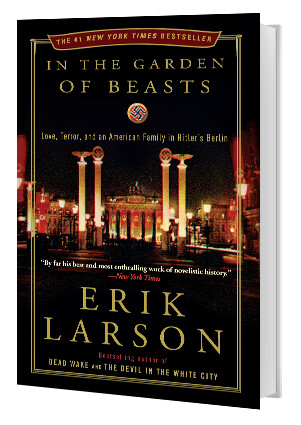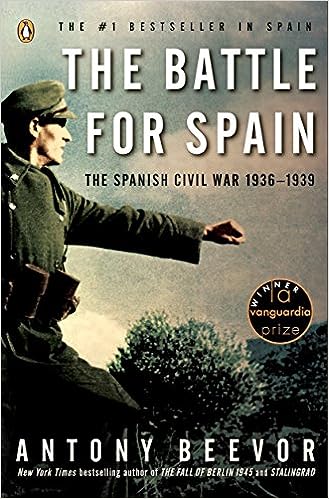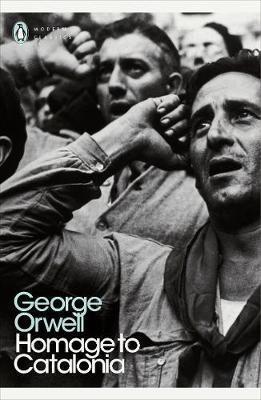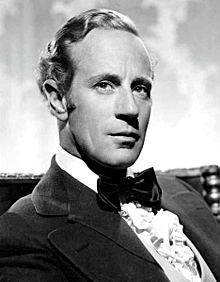Agree completely re “A Gentleman in Moscow.”
Looking forward to reading “The Lincoln Highway” by Towles, but haven’t gotten to it yet.
Agree completely re “A Gentleman in Moscow.”
Looking forward to reading “The Lincoln Highway” by Towles, but haven’t gotten to it yet.
just fyi,
if you have inflammation problems, put some milk in your coffee; it can help, search the internets for it and inflammation is is proven to work.
Internet Archive* is a non-profit library of millions of free books, movies, software, music, websites, and more."
i checked it out and the books are not the latest, but all sorts of books and other media you can apparently access online for free. seems for books, you can check them out for 14 days like a library.
seems a very good digital resource. check out if you wish.
I too really enjoyed ‘A Gentleman in Moscow’.
Just finished reading ‘Empire of Pain’ about the Sackler family and their pharmaceutical companies dating back to the early 1900’s and how they have played a horribly instrumental part in the opioid crisis we are in the midst of today. It is super interesting and sheds more light on how corrupt these pharmaceutical businesses are.
Prior to reading this book, I didn’t know much about the Sackler family. I do remember noticing the Sackler Wing at the Metropolitan Museum in NYC years ago. The Sacklers made huge donations to the many of the most prestigious museums and universities around the world. Of course, the Sackler name was proudly displayed as the major benefactors to these institutions. My understanding is that the Sackler name has been removed from most, if not all of those institutions now.
A good read so far. Based on almost 250 interviews so lots of personal anecdotes.
Learning a lot about the integration of Houston & UH.
p.45 describes how business & civic leaders peacefully integrated Downtown stores & lunch counters in 1960 —
Both black and white business owners saw the potential for a possible Houston race riot like those that had become too commonplace in other Southern cities. They began working behind the scenes to bring about the orderly desegregation of downtown Houston stores. The resulting plan was developed and led by three individuals: Hobart Taylor, a black entrepreneur; Bob Dundas, vice president and head of publicity for Foley’s Department Store; and John T. Jones, publisher of the Houston Chronicle. They convinced all downtown stores to integrate quickly and in unison. Dundas assured the managers of downtown lunch counters and businesses that there would be no negative publicity if they integrated. In fact, the business leaders took steps to make sure there would be no publicity at all. Dundas convinced every newspaper, television, and radio station in Houston not to report on the downtown integration for a week. Dundas termed the tactic “the Blackout.” The news media agreed to it for the good of the city and to ease into integration without the adverse publicity that could very well set off protests and even riots.
Thus on August 25, 1960, 70 downtown lunch counters, department stores, drugstores, and supermarkets desegregated.
Over the last 2 weeks I’ve been on the beach in So Padre. I raced through a bunch of free books from a site called Bookbub. It’s English and English writers. Finished a bunch of action books
The Suppressor
Sleeping Soldiers
Rogue Enemy
Toe the Line
A 3 volume set of the Acid Vanilla seriers (pretty good)
Any Means Necessary
Blood in the Bayou
East Side Hustler
A 3 volume set of DI Sally Parker
Easy reading action or mystery books that were free
I read about 2 books a week. 98% of what I read is fiction. Spy books and fiction are my favorite.
My sister turned me on to Karin Slaughter. I’m finishing up the Grant County series and starting the Will Trent series. Great mystery books. If you are squeamish, they are pretty violent and graphic. I can’t put them down.
https://www.amazon.com/Small-Death-Lisbon-Robert-Wilson/dp/0425184234
Excellent read. Sort of a one hit wonder as his other novels aren’t so good

Read that in 2015. (I keep a record of my books.)
O’Neill’s 2019 book totally upends the conventional narrative of the Manson Family murders that shocked the nation in August 1969 just a few weeks after the 1st moon landing.
Prosecutor Vincent Bugliosi’s 1974 book “Helter Skelter” set that narrative: deranged Charlie Manson used LSD to take total mind control over his “Family” and he sent them to Hollywood to randomly kill, shock the nation, start a race war, after which he would emerge as leader.
In Bugliosi’s story, there was no connection between Manson & the victims.
But O’Neill shows that before the murders, Manson hung out with the Beach Boy’s Dennis Wilson and also top record producer Terry Melcher, son of Doris Day, who had worked with the Byrds and Paul Revere & the Raiders.
Manson had observed “with great interest and envy, the meteoric rise of the Beatles”. He thought he was a musician and he hoped to land a record contract with Wilson or Melcher. Melcher had previously rented the house on Cielo Dr. where the Tate murders occured. And the landlord stated Manson had visited the house in March of '69 looking for Melcher.
After the murders no one in Hollywood wanted to be known to have been associated with Manson and O’Neil writes that Bugliosi’s Helter Skelter book was a coverup. O’Neill develops some angles as to why this could be.
(Bugliosi was no angel — see hardcover page 396 image below.)
One intriguing aspect of O’Neill’s book is the repeated parole violations by Manson & his Family that had little or no consequences.
O’Neill suggest Manson had some sort of high-level protection that could get him & Family members out of trouble over and over again. But nothing was proven by O’Neill, even after years of searching.
The 436-page book has no neat conclusion. Too much time had gone by. Many people were reluctant to talk or had passed away. Many documents no longer existed or couldn’t be found.
TIL TIDBIT — “The actor Cary Grant, on the advice of his shrink, took some one hundred LSD trips during their weekly meetings in the late fifties.” (p.351)
I liked this only because you used the word “embiggen.” Maybe I’ll even read the book. ![]()
Looking for recommendations on a book or books about the Spanish Civil War — a precursor to WWII. It was terribly brutal. Among the atrocities was “a death toll of 13 bishops, 4,172 diocesan priests and seminarians, 2,364 monks and friars and 283 nuns, for a total of 6,832 clerical victims… (&) numerous laity.”
For Whom The Bell Tolls by Hemingway
Maybe old news to some of y’all, but currently reading Where Men Win Glory by Jon Krakauer. Mostly about Pat Tillman so far, but also covers the rise of Al Qaeda and bin Laden. Book argues that 9/11 was really about Al Qaeda drawing the United States into Afghanistan after the first WTC attack and the attack on the USS Cole failed to do so. Gripping stuff.
Yeah, read that one last year. Filled a lot of holes.

‘A civil war is not a war but a sickness,’ wrote Antoine de Saint-Exupéry. ‘The enemy is within. One fights almost against oneself.’ Yet Spain’s tragedy in 1936 was even greater. It had become enmeshed in the international civil war, which started in earnest with the bolshevik revolution.
The horrors in Russia had undermined the democratic centre throughout continental Europe. This was because the process of polarization between ‘reds’ and whites’ allowed both political extremes to increase their own power by manipulating fearful, if not apocalyptic, images of their enemies. Their Manichaean propaganda fed off each other. Both Stalin and Goebbels later exploited, with diabolical ingenuity, that potent combination of fear and hatred. The process stripped their ‘traitor’ opponents of their humanity as well as their citizenship. This is why it is wrong to describe the Spanish Civil War as ‘fratricidal’. The divisiveness of the new ideologies could turn brothers into faceless strangers and trade unionists or shop owners into class enemies.
Normal human instincts were overridden. In the tense spring of 1936, on his way to Madrid University, Julian Marias, a disciple of the philosopher José Ortega y Gasset, never forgot the hatred in the expression of a tram-driver at a stop as he watched a beautiful and well-dressed young woman step down onto the pavement. ‘We’ve really had it,’ Marias said to himself. ‘When Marx has more effect than hormones, there is nothing to be done.’
The Spanish Civil War has so often been portrayed as a clash between left and right, but this is a misleading simplification. Two other axes of conflict emerged: state centralism against regional independence and authoritarianism against the freedom of the individual. The nationalist forces of the right were much more coherent because, with only minor exceptions, they combined three cohesive extremes. They were right wing, centralist and authoritarian at the same time. The Republic, on the other hand, represented a cauldron of incompatibilities and mutual suspicions, with centralists and authoritarians, especially the communists, opposed by regionalists and libertarians.
Ghosts of those propaganda battles of seventy years ago still haunt us. Yet the Spanish Civil War remains one of the few modern conflicts whose history had been written more effectively by the losers than by the winners.
Antony Beevor was educated at Winchester and Sandhurst. A regular officer in the 11th Hussars, he served in Germany and England. He has published several novels, and his works of nonfiction include The Spanish Civil War; Crete: The Battle and the Resistance, which won the 1993 Runciman Award; Stalingrad: The Fateful Siege: 1942—1943; and Berlin: The Downfall, 1945. With his wife, Artemis Cooper, he wrote Paris: After the Liberation: 1944—1949. His book Stalingrad was awarded the Samuel Johnson Prize for Non-Fiction, the Wolfson History Prize, and the Hawthornden Prize in 1999.
Franco’s staff desperately sought to obtain exposure for their chief. Eventually they managed to arrange for his photograph to be projected on cinema screens to the tune of the Royal March. The audience gave the fascist salute during the five minutes that this lasted. Later on, public establishments in the nationalist zone were obliged to display his portrait. And whenever the Royal March was played on the radio all those who did not want their loyalty to be suspect rose to their feet and gave the fascist salute.
I was going 2 mention that 1.
Everything by Beevor is well done.
This was good.
Orwell would die young from issues from fighting in Spain.

Trying these next.
Just started reading this — a plot to kill the Big Three when they met in Tehran in '43 — pretty good so far
Today I Learned famous actor Leslie Howard was killed when the Luftwaffe shot down the passenger plane he was on.
(p.94) On June 1, 1943 the pilots and thirteen passengers aboard a commercial British airplane flying from neutral Lisbon, Portugal, to Bristol, England look out their windows to see German fighters. The Luftwaffe, with no warning or provocation, shoot the British aircraft out of the sky, killing everyone on board… A theory quickly emerges that the Germans believed that Prime Minister Winston Churchill was on the flight. Churchill was scheduled to travel from Portugal to England on the same day, and German spies spotted a man at the Lisbon airport who bore a striking resemblance to the Prime Minister complete with cigar and trademark hat, accompanied by aides who resembled Churchill’s staff. The German spies called in the target, and when the plane took off, the Luftwaffe trailed the aircraft and shot it out of the sky. The man who looked like Churchill was, in fact, a British film producer with no connection to the government. One of his traveling companions was famed British film actor Leslie Howard, who died with every other person on the plane.

Leslie Howard as Ashley Wilkes in Gone with the Wind, 1939
More
(p.145) … (Stalin) promises that within a day or two he’ll have a letter of his own for (US Ambassador) Davies to carry back to Washington… A few days later… Stalin and Molotov present Davies with a letter he’s supposed to hand-deliver to Roosevelt… They also add some personal gifts from the Soviet Premier to the President… a Soviet tommy gun and a captured German light hand machine gun.
James Lee Burke is my favorite novelist of all time. His books always feature great characters and the best plots and prose in the genre, really brings Louisiana to life. You will fall in love with the character Clete Purcel I promise you haha.
©Copyright 2017 Coogfans.com